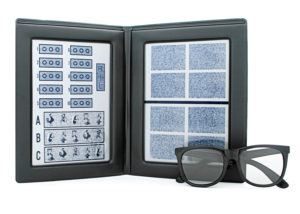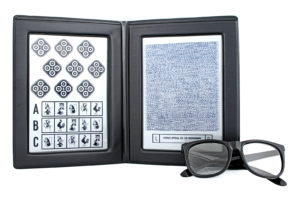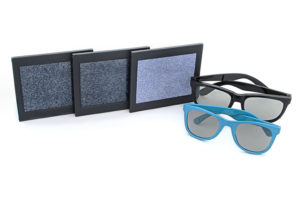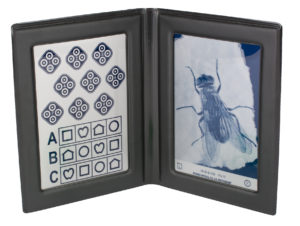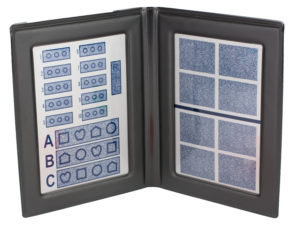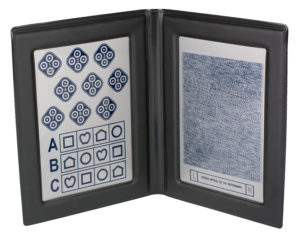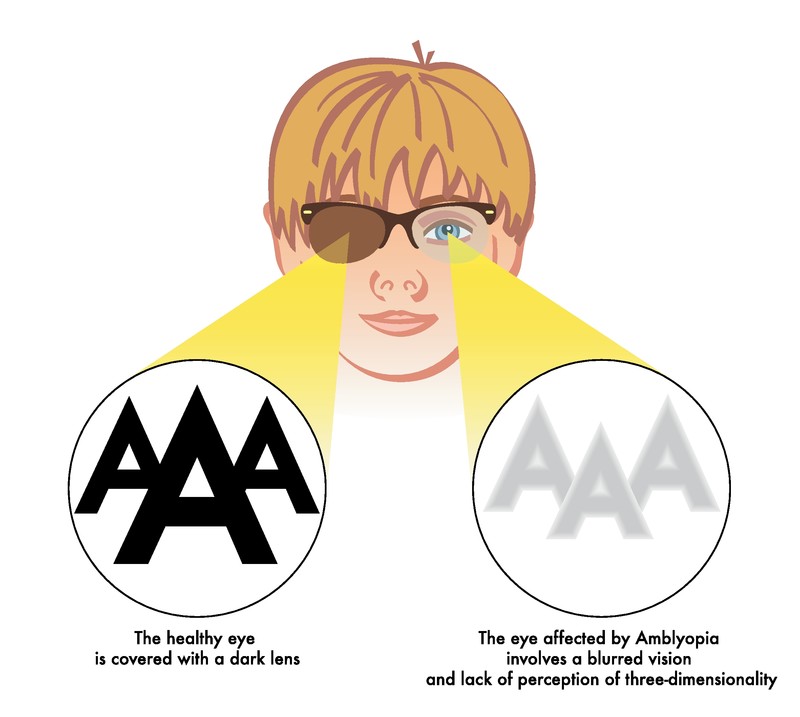
Amblyopia
Amblyopia is the medical term used when the vision in one of the eyes is reduced because the eye and the brain are not working together properly. The eye itself looks normal, but it is not being used normally because the brain is favoring the other eye. This condition is also sometimes called lazy eye.
Amblyopia is the most common cause of visual impairment among children, affecting approximately 2 to 3 out of every 100 children. Unless it is successfully treated in early childhood, amblyopia usually persists into adulthood. It is also the most common cause of monocular (one eye) visual impairment among young and middle-aged adults. Early detection is key in preventing long-term effects of amblyopia.
Tests of visual acuity directly test for the presence of amblyopia. It is crucial when attempting to test for amblyopia that each eye is tested individually. Commonly used vision charts for matching and naming tests include HOTV and LEA symbols.
Stereoscopic vision and depth perception testing is important in identifying diseases such as amblyopia. Stereovision is how each eye may see an object from different angles, but combines these angles to give us a 3D image. Many of these tests ask the patient to identify the “raised” letter, shape or animal to measure depth perception and identify if the patients’ eyes are working together to identify the intended image.
Source: National Eye Institute
SUGGESTED VISION SCREENERS INCLUDE:
Optec 5000 and Optec 5500 Vision Screeners
- Ideal for pre-screening, to quickly and accurately test patients in a controlled environment
- Perform comprehensive visual screening in minimal time
- Includes one 12-test slide package at no additional cost. Three popular standard packages:
- Customization of package available


